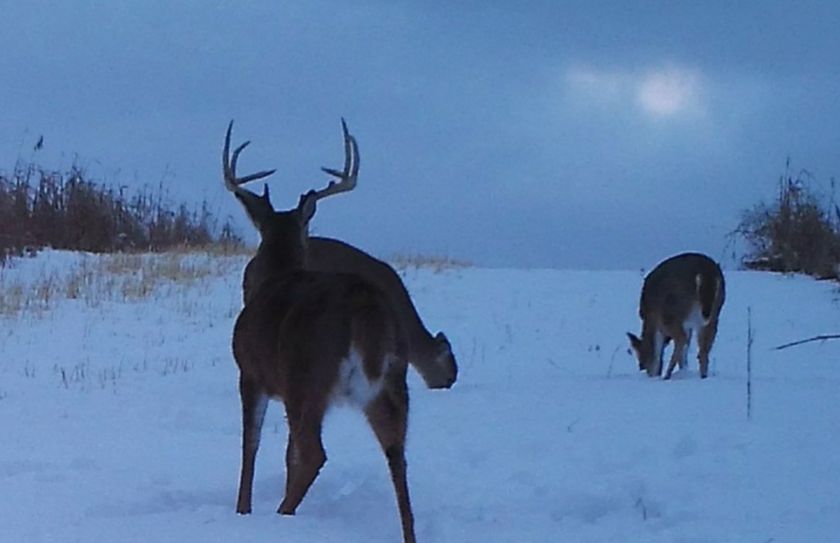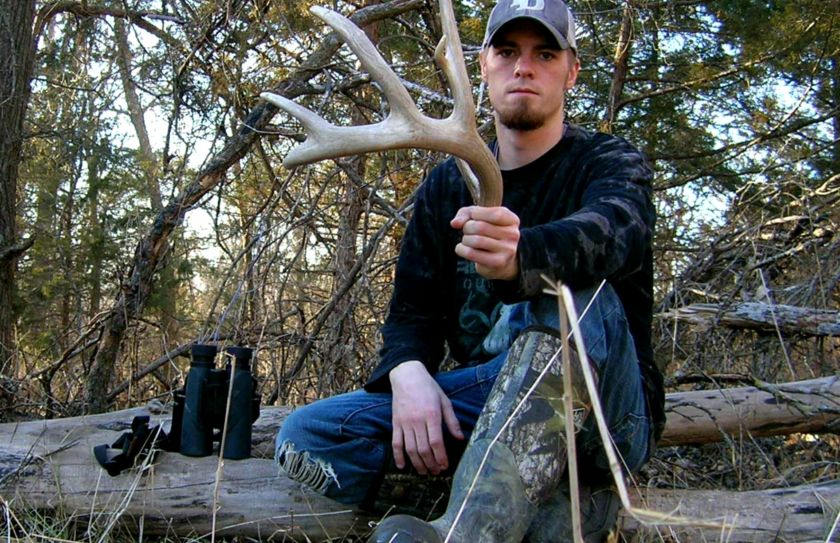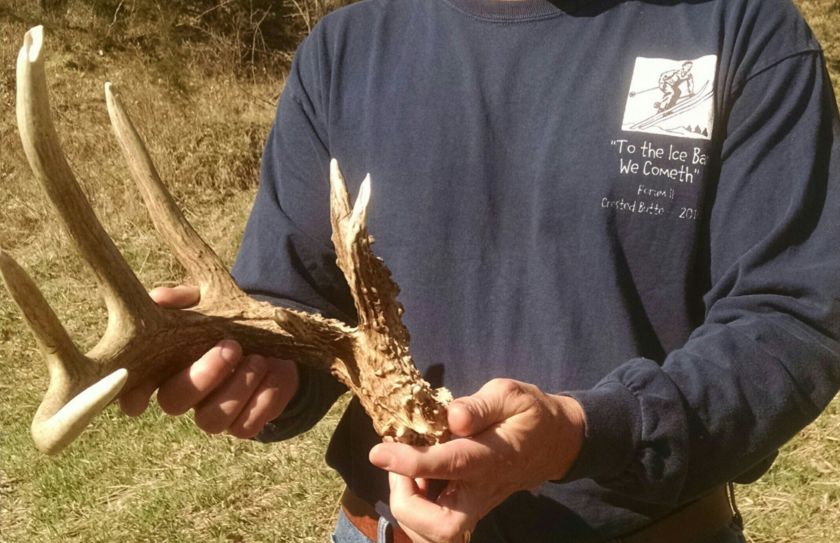We've all been there! On a wintery February scouting trip on your favorite hunting parcel, you discover a huge pile of beds, pellets and urine scattered in the snow on a small knoll in the open hardwoods. A great place for a stand location, right? If you base your hunch on overall sign the answer may be a very loud YES! However, if you take a look into what Winter scouting sign is really predicting, you may want to enjoy the current sign and keep scouting.
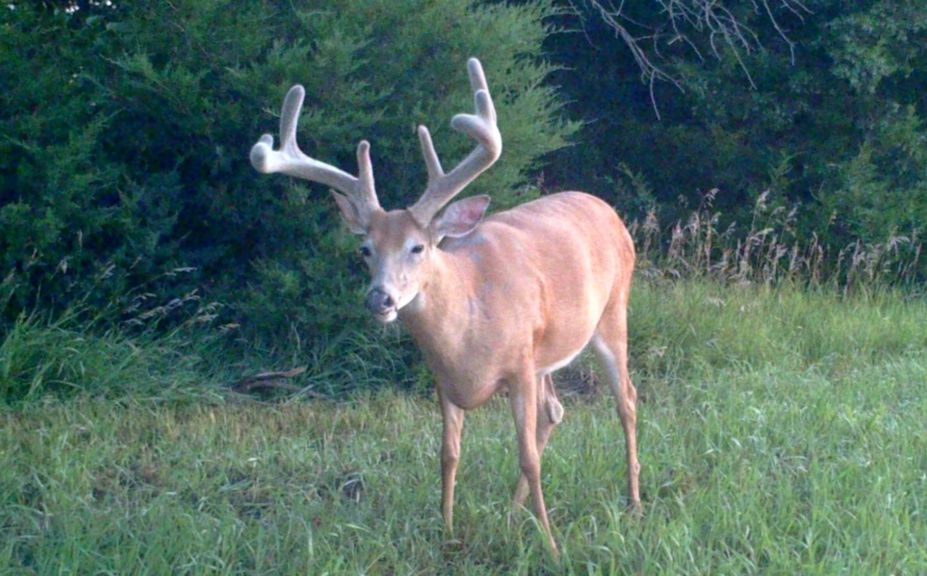
Should Fall Sign Match Winter Scouting Clues?
Winter sign can be very misleading as to where you should hang your next treestand. There are 3 important Winter scouting rules for you to follow to make sure that your Summer whitetail efforts don't hinder your Fall success:
1. Open Nighttime Bedding Opportunities
One of my favorite activities is to scout for whitetails, and I am extremely fortunate to make a living doing it! An interesting observations on my tour around the Northern 1/2 of the countries unique whitetail parcels is that several concepts are true anywhere a whitetails roams. Where bucks bed at night during the Winter and where bucks bed during the daytime during the Summer, are often one in the same: A mature hardwood knoll, point or bench. With great Summer airflow and shad along with a little elevation, a mature buck has all that they need to lazily bed out the Summer months. Also, that same open, elevated position is a great place to bed during the hours of cold winter nights. With calm skies and diminished winds an old monarch can find a safe place to wait out the night, while keeping an eye out for any predators. While that open knoll that is full of beds, pellets, urine and tracks during the winter seems so inviting, I would opt for heavier woody browse cover within a 1/2 mile to mile, if I would have to bet where that buck would bed during the Fall.
2. Rubs and Scrapes Matter
If a trail doesn't lead to rubs or scrapes, it may be just another Winter highway that funnels large herds of deer between scattered Winter habitats, or within those habitats themselves. While rubs and scrapes don't necessarily attract the attention of bucks exclusively during the hunting season (as witnessed within my Mock Vine scrapes), a very high percentage reflect the hunting season patterns of mature bucks. Yarding deer that herd within heavy Winter habitat types of wood regeneration, conifers, switchgrass or other habitat types, may or may not be in those locations during the Fall, in particular when it comes to large acreage tracts of conifer or switchgrass habitats. One of the best ways to determine if Winter deer sign was created during the Fall, is to match the travel patterns of your Winter scouting to the travel patterns of rubs and scrapes.
3. Do Buck Antler Shed Locations Matter?
Some of the best small deer parcels that I have worked on or hunted on, offer very few Shed Antlers, if any at all. Why? Because the majority of great Winter habitat parcels, are not great Fall habitat parcels. In my experience you are more likely to find shed antlers in habitat types that relate to Summer habitat than Fall habitat.
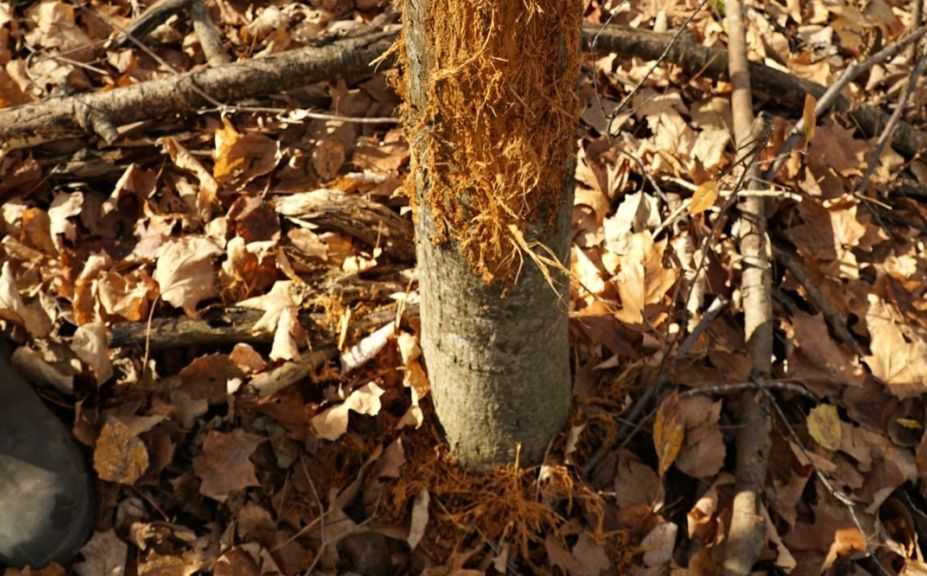
*Making sure that the Rub Sign you find is from early season or during the annual rut, is often as easy as finding wood shavings on top of the leaves, or under the leaves. With leaf drop sometime during October in nearly every Northern whitetail sign, don't forget to check out the rubs you find during your Winter scouting efforts.
Conclusion
While it may sound like I don't like to scout during the Winter, I can honestly say that I love scouting during the Winter months to find important clues that relate to the following Fall! It is very important however, that you learn to decipher the difference between great Fall deer patterns that you find during the Winter, and great Winter or Summer Habitat. Just like Fall mature buck habitat is often the opposite of what attracts buck during the Summer months, the difference between Fall and Winter can be nearly as great.
